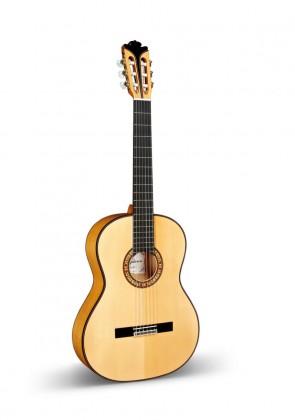Key characteristics of a Spanish Flamenco Guitar
There are many types of Classical Spanish guitar, but the most well known is the Flamenco guitar. Whenever you think of Spain and its music, this is the guitar style and sound that you probably think of. The Spanish Flamenco guitar and its music can be found on every continent and almost every country and city in the world, it is also recognized by UNESCO as part of our global heritage and culture.
To the untrained eye, a classical guitar and a flamenco guitar can seem identical. In this post we will explain to you how to tell them apart and what the key differences mean in sound, technique and flavor. The differences are not just in the sound, here we will show you the big differences:
Physical appearance
The body of the Flamenco guitar is thinner than a normal classical guitar, this gives the player more agility and comfort whilst playing. Also, the strings are closer to the frets meaning that the player can exert less downward pressure on the strings and play quicker.
The woods used for making the guitar are; Cypress for the sides and back and German spruce for the top. Other woods that are commonly used are sycamore and Indian rosewood.
Sound
As can be expected, from having a smaller body and strings that have less movement; the sound is more sharp, almost nasal, and the volume produced is much less than a traditional acoustic guitar. This sound fits perfectly with the fast frenetic style of Flamenco playing. The notes are more metallic and more dry with much less reverb. The strings that are close to the frets mean you can play faster and the notes are cleaner as there is less resonance to overlap with the previously played note.
Now that you know the key differences between a classical guitar and a Flamenco guitar you can be more discerning when you listen to classical music, and, if you are looking to buy a guitar you will know which guitar is best for you.



